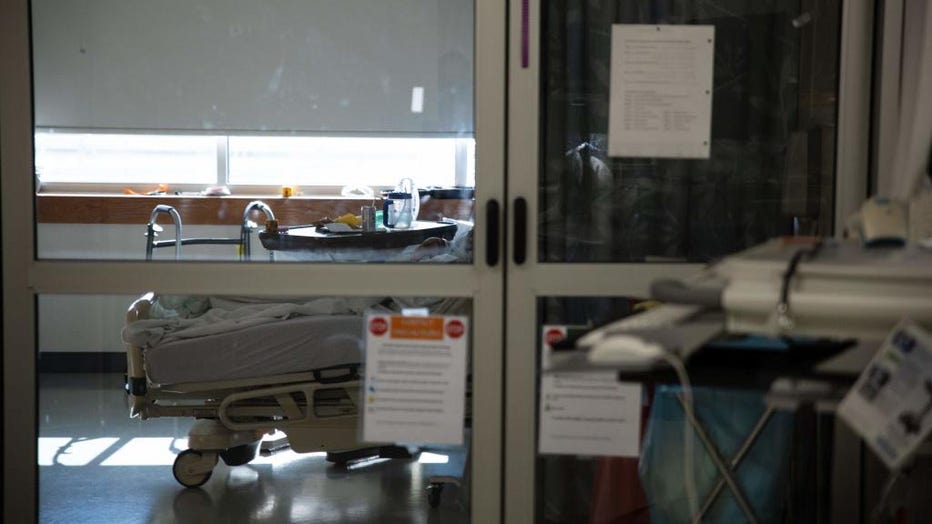Some Ohio hospitals running out of ventilators, Cleveland Clinic says
CINCINNATI - A top Cleveland Clinic official says hospital systems in northern Ohio are running out of ventilators due to the worsening COVID-19 outbreak, joining a warning by the governor and top hospital officials from across the state about rising hospitalizations.
Dr. Robert Wyllie, the chief of medical operations at Cleveland Clinic, said Monday that hospital systems in the state have been forced to transfer ventilators and high-flow oxygen equipment due to a shortage.
“All of us are starting to be stretched,” Wyllie said during Ohio Gov. Mike DeWine’s coronavirus briefing.
DeWine said a total of 4,358 patients are currently hospitalized due to COVID-19 in the state, a 59% increase from just two weeks ago and the highest since the outbreak began. That figure includes more than 1,000 in intensive care units and more than 570 on ventilators, according to state health department data.

A COVID-19 patient is seen through the glass doors as they lay in the ICU at Van Wert County Hospital in Van Wert, Ohio on Nov. 20, 2020. (Photo by MEGAN JELINGER/AFP via Getty Images)
The dangerous surge in cases has also impacted a record number of medical workers at the Cleveland Clinic and elsewhere, hindering the hospital’s ability to care for patients. Wyllie called this “his biggest concern.”
Nearly 1,000 Cleveland Clinic health care workers are currently out because they either have COVID-19 or are under quarantine from being exposed. Wyllie said the shortage is echoed in other Ohio hospital systems.
“I want to emphasize that we look at each of these infections, and they’re not catching it in the hospital. Our caregivers are getting COVID in the community,” he said.
In Lima in western Ohio, coronavirus patients are entering St. Rita's Medical Center faster than other patients can be safely discharged, said Mercy Health-Lima president Rhonda Lehman.
In southwestern Ohio, hospitals are approaching the point where the number of COVID-19 patients will outnumber non-coronavirus patients, said Dr. Richard Lofgren, president and CEO of the University of Cincinnati HC Health system.
“The growth is exponential at this point. And it’s not that we're planning for the surge — the surge is here,” Lofgren warned.
In central Ohio, coronavirus patients have increased from 400 at the beginning of November to 960 on Monday, said Andrew Thomas, chief clinical officer at the Ohio State Medical Center.
“We can’t sound the alarm bell loud enough for people in the state of Ohio to change their behavior,” Thomas said, who encouraged people to limit Thanksgiving gatherings.
The seven-day rolling average of daily new cases in Ohio has risen over the past two weeks from 4,467 new cases per day on Nov. 8 to 7,618 new cases per day on Nov. 22, according to data compiled by The COVID Tracking Project.
DeWine warned that over the next few weeks as cases continue to spike, “every hospital in the state is going to have to make tough decisions” about staffing, what elective procedures they'll need to postpone, and even “potentially postponing ambulatory and outpatient office visits.”
Ohio’s troubling figures mirror the situation in states from coast to coast. New cases of COVID-19 in the U.S. have skyrocketed to all-time highs, averaging more than 170,000 per day, and deaths have soared to over 1,500 a day, the highest level since the spring.
The virus is blamed for more than a quarter-million deaths in the U.S. and over 12 million confirmed infections, data from Johns Hopkins University shows.
RELATED: US sees record new COVID-19 cases, deaths, hospitalizations in 'critical moment' of pandemic
The Associated Press contributed to this report.

